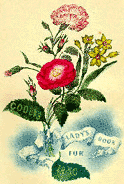Accessible Archives

These eight databases present more than 176,000 articles from 18th- and 19th-century newspapers, magazines, books, and genealogical records. Much of the material comes from Pennsylvania and other mid-Atlantic states.
Godey’s Lady’s Book (18301880), one of the most popular 19th-century publications, furnished middle- and upper-class American women with fiction, fashion illustrations, and editorials. The Pennsylvania Gazette (17281800), a Philadelphia newspaper, is described as the New York Times of the 18th century. The Civil War: A Newspaper Perspective includes major articles from the Charleston Mercury, the New York Herald, and the Richmond Enquirer. African-American Newspapers: The 19th Century includes runs from six newspapers published in New York, Washington, DC, and Toronto between 1827 and 1876. American County Histories to 1900 provides 60 volumes covering the local history of New Jersey, Delaware, and Pennsylvania. The Pennsylvania Genealogical Catalogue: Chester County 18091870 has been partially digitized, with 25,000 records available. The Pennsylvania Newspaper Record: Delaware County 18191870 addresses industrialization in a rural area settled by Quaker farmers.



